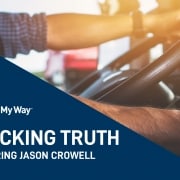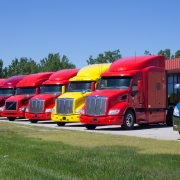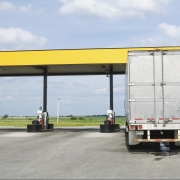
As we approach 2025, CEOs in the trucking industry face a critical challenge: how to effectively budget for driver recruitment in an increasingly competitive and technologically advanced landscape. The ongoing driver shortage, coupled with evolving recruitment technologies and changing driver expectations, necessitates a strategic approach to recruitment budgeting. This article aims to provide CEOs with insights and strategies to optimize their driver recruitment budgets for 2025.
Understanding the Current Landscape
The trucking industry reportedly needs more than 1 million new drivers over the next decade to meet demand and replace those leaving the industry. The ATA expects the current shortage of 78,000 drivers to more than double by 2031, putting unprecedented pressure on recruitment efforts. Moreover, the cost of recruitment has been steadily rising, with the average cost-per-hire in the trucking industry is between $5,000 to $10,000 according to recent industry reports.
Key Components of a Strategic Recruitment Budget
- Technology Investments
In 2025, technology will play an even more crucial role in driver recruitment. Your budget should account for:
- Applicant Tracking Systems (ATS): Your applicant tracking systems can streamline the application process and help manage candidate relationships more effectively. Be sure that your ATS includes a CDL compliant application.
- Technology enabled candidate matching platforms: These can significantly reduce time-to-hire by quickly identifying the most suitable candidates.
- Mobile-friendly application processes: With more job searches happening on mobile devices, ensuring your application process is mobile-optimized is crucial.
When budgeting for these technologies, consider not just the upfront costs but also ongoing maintenance, updates, and training for your team.
- Marketing and Advertising
The shift towards digital recruitment strategies is likely to continue. Your 2025 budget should reflect this:
- Analyze the results across all your recruitment marketing sources, scale back to the few that produce the greatest return on your investment, and increase the allocation for targeted campaigns across those sourcing channels
- Focus on improving how you advertise your employment value proposition to attract new drivers to the industry
- Maintain a balance with traditional methods that still yield results in certain demographics
- Recruiter Training and Development
As recruitment processes evolve, so must your team. Budget for:
- Upskilling programs focused on new technologies
- Training to improve the candidate experience and engagement
- Courses on data analysis to make better use of recruitment metrics
Investing in your recruitment team can lead to more efficient processes and better hiring decisions, potentially reducing long-term costs.
- Retention Initiatives
Remember, an effective recruitment budget also includes retention efforts. Consider allocating funds for:
- Comprehensive onboarding programs
- Ongoing training and development opportunities
- Regular driver satisfaction surveys and feedback mechanisms
Industry data shows that the cost of replacing a driver can be up to 30% of a driver’s annual earnings, making retention a crucial part of your overall recruitment strategy.
ROI Metrics to Guide Your Budgeting
When planning your budget, ensure that you have robust reporting capabilities that will allow you to focus on these key ROI metrics:
- Cost per hire: Track this closely and aim to reduce it over time through more efficient processes. Focus on results, not activity; on quality, not quantity. Cost-per-lead is not a valuable measure.
- Engagement and Funnel Conversion: Understand how, when, and why drivers are progressing through your recruitment funnel to improve your candidate experience and ability to convert interested drivers to hires. Examine your interest to hire ratio.
- Time to hire: Faster hiring means trucks get on the road quicker, directly impacting your bottom line.
- Quality of hire: Monitor performance metrics of new hires to ensure your recruitment efforts are bringing in the right talent.
- Retention rates: Higher retention means lower long-term recruitment costs. Understanding voluntary turnover reasons and tenure time can provide you with valuable insights to improving driver retention.
Forecasting and Flexibility
Your 2025 budget should be data-driven but flexible. Use historical data and industry projections to forecast your needs but build in contingencies for market changes. Consider scenario planning for different economic conditions—what would your recruitment needs and strategies look like in a booming economy versus a recession?
Leveraging Partnerships
Consider allocating budget for strategic partnerships that can amplify your recruitment efforts:
- Recruitment partners with specific industry expertise
- Driving schools for a pipeline of new talent
- Industry associations for networking and shared resources
These partnerships can provide access to a wider talent pool and potentially reduce your overall recruitment costs.
Balancing Technology and Human Interaction
While technology can dramatically improve efficiency, the human element remains crucial in driver recruitment. Your budget should reflect a balance:
- Invest in technology for initial screening and matching
- Allocate resources for personal outreach to top candidates
- Ensure your recruiters have time for meaningful conversations with potential hires. A recruiter’s time should be spent on the most valuable part of the process, conducting the assessment and selection, not on administrative tasks.
Finding the right balance can lead to more effective recruitment and higher-quality hires.
Legal and Compliance Considerations
Don’t overlook the importance of compliance in your budgeting:
- Allocate funds for thorough background checks and drug testing
- Stay updated on changing regulations and budget for any necessary adjustments to your processes
Failing to comply with regulations can lead to significant costs and reputational damage, making this an essential part of your budget.
Measuring Success and Adjusting Strategies
Your recruitment budget should not be set in stone. Plan for regular reviews and adjustments based on performance:
- Identify key performance indicators (KPIs) aligned with your company’s goals
- Schedule quarterly budget reviews to assess performance against these KPIs
- Be prepared to reallocate funds based on what is working and what is not working
This agile approach allows you to optimize your budget throughout the year, ensuring you’re getting the best return on your recruitment investment.
The Strategic Imperative of Recruitment Budgeting
As we look towards 2025, it’s clear that strategic driver recruitment budgeting is more than just a financial exercise—it’s a key differentiator in a highly competitive industry. By focusing on technology, balanced with the human element, and remaining flexible and data-driven, you can create a recruitment strategy that not only fills seats but builds a stable, satisfied driver workforce.
The most successful companies in 2025 will be those that view driver recruitment not as a cost center, but as a strategic investment in their company’s future. By carefully allocating resources, leveraging technology, and continuously measuring and adjusting your approach, you can build a recruitment strategy that gives your company a significant competitive advantage.
As you plan your 2025 recruitment budget, consider how each allocation can contribute to not just hiring drivers, but building a resilient, high-performing fleet. In doing so, you’re not just preparing for the challenges of 2025—you’re positioning your company for long-term success in an ever-evolving industry.
Remember, in the world of trucking, your drivers are your most valuable asset. A well-planned, strategic approach to recruitment budgeting is one of the most important investments you can make in your company’s future. To win in this industry you always need to be recruiting, even when you are not hiring.











